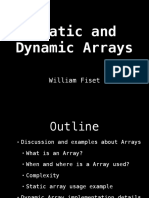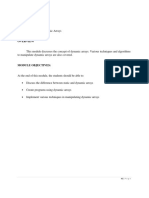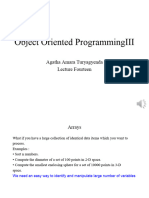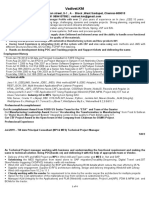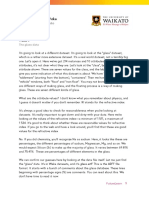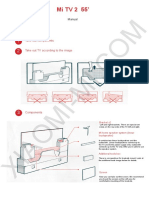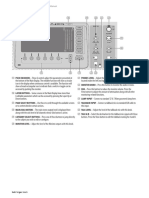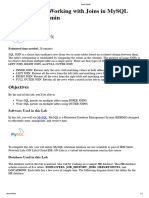0% found this document useful (0 votes)
96 views15 pagesArrays
The document discusses static and dynamic arrays, explaining that a static array has a fixed length while a dynamic array can grow and shrink in size. It provides examples of using static arrays by indexing elements and details how a dynamic array can be implemented using a static array underneath, dynamically allocating more space when needed by creating a new static array with double the capacity and copying elements over. The complexity of different array operations is also summarized.
Uploaded by
d ponnapalliCopyright
© © All Rights Reserved
We take content rights seriously. If you suspect this is your content, claim it here.
Available Formats
Download as PPTX, PDF, TXT or read online on Scribd
0% found this document useful (0 votes)
96 views15 pagesArrays
The document discusses static and dynamic arrays, explaining that a static array has a fixed length while a dynamic array can grow and shrink in size. It provides examples of using static arrays by indexing elements and details how a dynamic array can be implemented using a static array underneath, dynamically allocating more space when needed by creating a new static array with double the capacity and copying elements over. The complexity of different array operations is also summarized.
Uploaded by
d ponnapalliCopyright
© © All Rights Reserved
We take content rights seriously. If you suspect this is your content, claim it here.
Available Formats
Download as PPTX, PDF, TXT or read online on Scribd
/ 15
